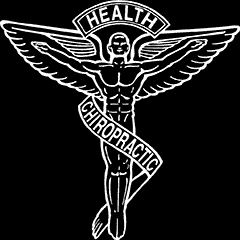| CHIROPRACTIC | COURSES | MEDICINE |
| 520 | Anatomy | 508 |
| 420 | Physiology | 326 |
| 205 | Pathology | 401 |
| 300 | Chemistry | 325 |
| 130 | Bacteriology | 114 |
| 420 | Diagnosis | 324 |
| 320 | Neurology | 112 |
| 217 | X-ray | 148 |
| 65 | Psychiatry | 144 |
| 65 | Obstetrics | 148 |
| 225 | Orthopedics | 156 |
| 2,887 | Total Hours | 2,706 |
It has become the belief of some people that Chiropractors are less educated than their Medical counter-parts, but in actuality this is not the case. As the table above shows, Chiropractic students in fact receive more hours of basic science training than Medical students. Where most of the differences develop in the educational programs is at later stages. While Medical students begin to receive education in pharmacology and surgery, Chiropractic students receive training in adjusting techniques, nutrition, and physical therapy. Although many people think of Doctors of Chiropractic as back doctors, Chiropractors are actually capable to diagnosing and treating a great deal of conditions.
Chiropractic students are also required to satisfy requirements very similar to "residency" for Medical students, which involves about 600 hours of clinical practice in an internship that involves seeing patients, performing a patient work-up and evaluation, and performing an adjustment under the supervision of a licensed Doctor of Chiropractic. In addition Chiropractic students must pass several National Board exams, which are held by the Council for Chiropractic Education, in order to meet the demands of state licensure. The entire process is approximately a five year program that leads to a Doctorate degree. Once licensed, a Doctor of Chiropractic must attend continuing education classes in order to be aware of the advances and developments in the profession, as well as to meet the requirements set forth by state licensing boards, exactly like a Medical Doctor must do.
Although Chiropractors and Medical Doctors have different perspectives and beliefs, they are both well educated and well qualified as health-care professionals.
Sources:
1) Palmer College of Chiropractic, "How does one become a Doctor of Chiropractic and earn a D.C. degree?"
2) Shaw Chiropractic Group, "How well educated is a Chiropractor?"
3) National Health Federation Bulletin

1 comment:
Thanks for sharing that, Brett. I think it's interesting that Chiropractors spend much more time learning to diagnose than medical students.
Post a Comment